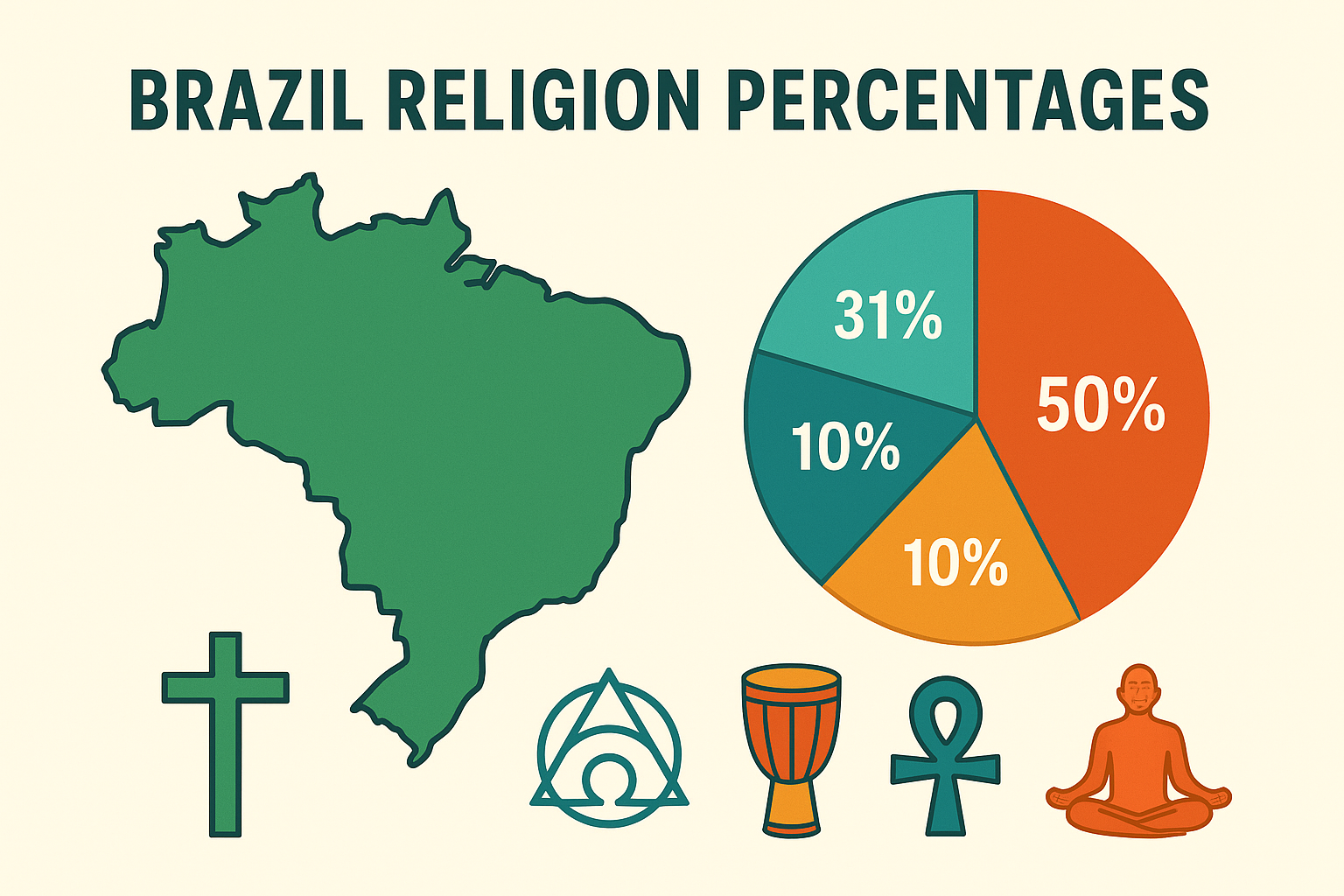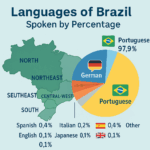Poverty is more than a number—it reflects how people live, eat, and survive.
In Brazil, poverty has been a major challenge for decades.
But what’s the current percentage of poverty in Brazil in 2025?
And how has it changed over the years?
In this post, we break down all the data in a simple, easy-to-understand way. Let’s get started.
Quick Stats: Poverty in Brazil (2025)
Based on the latest data from IBGE (Brazilian Institute of Geography and Statistics) and IPEA:
| Category | Percentage |
|---|---|
| Population living in poverty | 27.8% |
| Population in extreme poverty | 6.2% |
| Children under 14 in poverty | 38% |
| Households led by women in poverty | 34% |
| Households led by Black/Brown Brazilians | 33% |
So in 2025, nearly 1 in 3 Brazilians lives in poverty.
Let’s explore what this really means.
What Does “Poverty” Mean in Brazil?
In Brazil, poverty is defined by monthly income per person:
- Poverty: Less than R$665/month (~USD $130)
- Extreme poverty: Less than R$210/month (~USD $40)
These numbers vary slightly by state and cost of living.
Poverty isn’t just about money—it also involves access to:
- Education
- Healthcare
- Clean water
- Housing
- Food security
What Percentage of Brazil’s Population Is Below the Poverty Line?
In 2025:
- 27.8% of the total population lives below the poverty line
- That’s around 59 million people in a country of 212 million
6.2% live in extreme poverty, meaning they struggle to afford even basic food needs.
These numbers reflect progress since the COVID-19 crisis, but poverty remains widespread.
Poverty Trends in Brazil (2010–2025)
Here’s how poverty levels have shifted over the last 15 years:
| Year | % in Poverty | % in Extreme Poverty |
|---|---|---|
| 2010 | 21.0% | 5.3% |
| 2015 | 25.4% | 6.1% |
| 2020 | 31.5% | 9.2% |
| 2022 | 29.2% | 7.1% |
| 2025 | 27.8% | 6.2% |
The pandemic caused a sharp rise, but government programs have helped bring numbers down again.
Poverty Hits Children Hardest
Child poverty is a major issue in Brazil.
- In 2025, 38% of children under 14 live in poverty
- Many lack consistent access to food, schooling, and healthcare
Poverty in childhood can cause long-term problems, including:
- Poor academic outcomes
- Health issues
- Lower income in adulthood
Gender & Race: Who’s Most Affected?
Poverty in Brazil is not evenly spread.
Certain groups are hit harder than others.
👩🦱 Households Led by Women:
- 34% live in poverty
- Women often earn less and care for children without support
🧑🏾🦱 Afro-Brazilian Communities:
- 33% of households led by Black or Brown Brazilians are in poverty
- Racial inequality is deeply rooted in Brazil’s history
📍 Rural vs Urban:
- Rural poverty: 45–50%
- Urban poverty: 25%
Rural communities often lack access to jobs, education, and infrastructure.
Regional Breakdown: Where Poverty Hits Hardest
Poverty isn’t the same across all regions of Brazil.
| Region | Poverty Rate (2025) |
|---|---|
| North (Amazonas, Pará) | 41% |
| Northeast (Bahia, Maranhão) | 39% |
| Central-West (Goiás, Mato Grosso) | 22% |
| Southeast (São Paulo, Rio) | 18% |
| South (Paraná, Santa Catarina) | 15% |
The North and Northeast are the most affected areas, especially in rural zones.
What Causes Poverty in Brazil?
Here are some of the main reasons so many Brazilians live in poverty:
- Income inequality
- Lack of education access
- Unemployment and informal jobs
- Racial and gender discrimination
- Weak public services in poor areas
- Regional development gaps
Even though Brazil is one of the world’s largest economies, the wealth isn’t evenly shared.
Government Programs to Fight Poverty
Brazil has several major programs to help reduce poverty:
1. Bolsa Família / Auxílio Brasil
- Provides monthly payments to low-income families
- Linked to education and healthcare attendance
2. Vale Gás (Gas voucher)
- Helps poor families afford cooking gas
3. Minha Casa Minha Vida
- Offers housing subsidies to low-income families
4. Renda Básica (Universal Basic Income)
- Still under debate in 2025, but pilot programs exist
These efforts have helped reduce extreme poverty—but more is needed.
How Does Brazil Compare to Other Countries?
Brazil’s poverty rate in 2025 (27.8%) is higher than some neighbors:
| Country | Poverty Rate (Est. 2025) |
|---|---|
| Chile | 12% |
| Argentina | 40%+ (in crisis) |
| Colombia | 36% |
| Mexico | 42% |
| Brazil | 27.8% |
Brazil is in the middle—better than some, but still behind developed countries.
Data Sources
These poverty statistics in Brazil come from:
- IBGE (Instituto Brasileiro de Geografia e Estatística)
- IPEA (Institute for Applied Economic Research)
- World Bank Reports
- UNICEF and UNDP Development Data
- Pnad Contínua Survey
FAQs – Brazil Poverty Percentage
What percentage of Brazil lives in poverty in 2025?
About 27.8% of the population, or 59 million people.
What percentage of Brazil lives in extreme poverty?
Roughly 6.2% in 2025.
What percentage of Brazil’s population is below the poverty line?
Around 28%, based on the most recent surveys.
What areas in Brazil have the most poverty?
The North and Northeast regions—especially rural parts.
What is the poverty line in Brazil?
Defined as living on less than R$665/month per person (approx. $130 USD).
Final Thoughts
Poverty in Brazil is a complex and ongoing challenge.
Even though progress has been made, millions still live without basic needs.
The percentage of Brazil in poverty today reflects both historical inequality and modern economic struggles.
Education, income equality, and regional development are key to changing that.
As Brazil looks forward, fighting poverty will remain one of its biggest goals.

